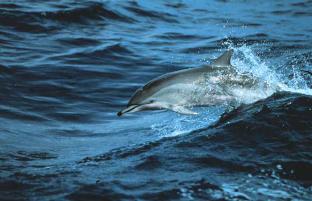Southeast Region Marine Mammal & Sea Turtle Viewing Guidelines
Overview | Detailed Guidelines
Overview
NOAA's National Marine Fisheries Service (NMFS) provides these guidelines for viewing whales, dolphins, seals, and sea turtles in the NMFS Southeast Region (from North Carolina to Texas, Puerto Rico and the U.S. Virgin Islands) in order to reduce the potential for wildlife viewing that inadvertently harms marine mammals or violates Federal law.
The Marine Mammal Protection Act (MMPA) prohibits the "take" of all marine mammal species in U.S. waters. The Endangered Species Act (ESA) provides additional protection to species of marine mammals listed as endangered or threatened.
Feeding or attempting to feed wild dolphins is prohibited under the Marine Mammal Protection Act of 1972 (MMPA) and implementing regulations. Violations can be prosecuted either civilly or criminally and are punishable by up to fines of $100,000 and/or up to a year in jail.
Viewing "Code of Conduct"
These guidelines are intended to inform the public about protection of marine mammals and sea turtles. They are not a replacement for Federal legal requirements.
- Remain a respectful distance from marine mammals and sea turtles. The minimum recommended distances are:
- dolphins, porpoises, seals = 50 yards
- sea turtles = 50 yards
- whales = 100 yards*
Federal law prohibits all approaches to right whales within 500 yards.
- Time spent observing marine mammals and sea turtles should be limited to 1/2 hour.
- Marine mammals and sea turtles should not be encircled or trapped between watercraft, or watercraft and shore.
- If approached by a marine mammal or sea turtle, put your watercraft's engine in neutral and allow the animal to pass. Any vessel movement should be from the rear of the animal.*
Pursuit of marine mammals and sea turtles is prohibited by Federal law.
- Never feed or attempt to feed marine mammals or sea turtles.*
Federal law prohibits feeding or attempting to feed marine mammals.
Updated: June 25, 2012
|



